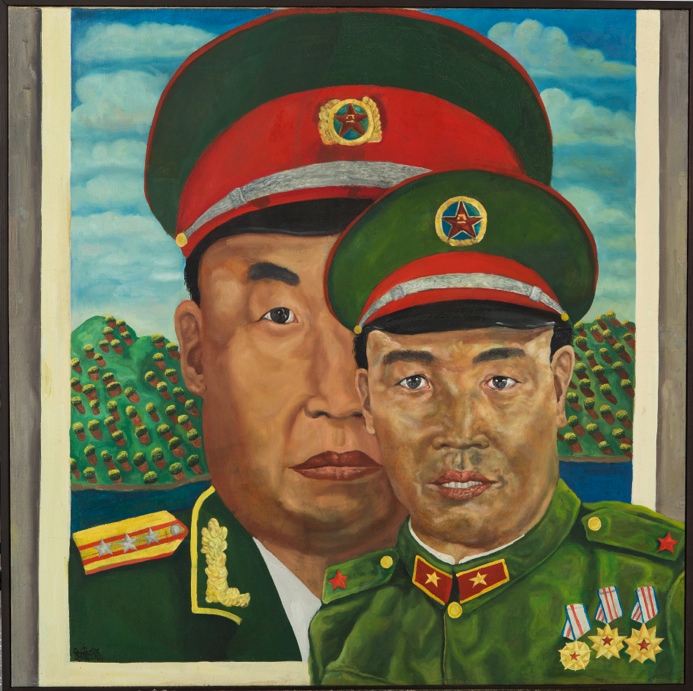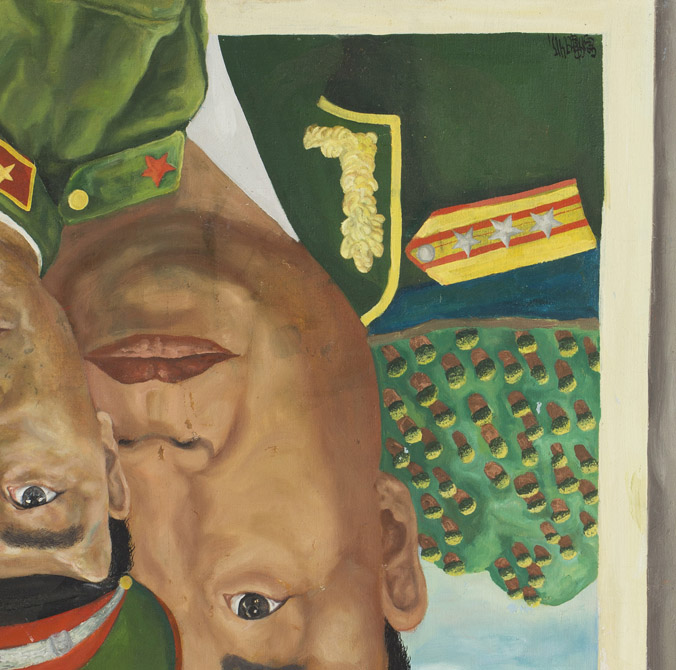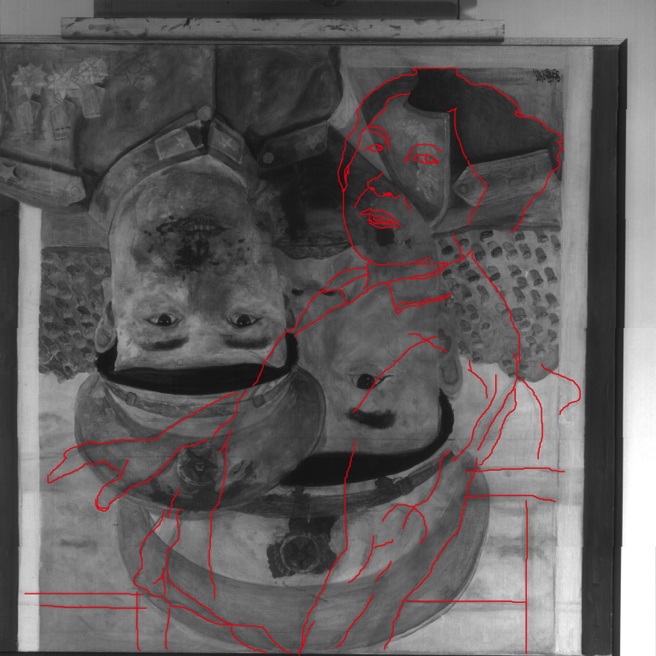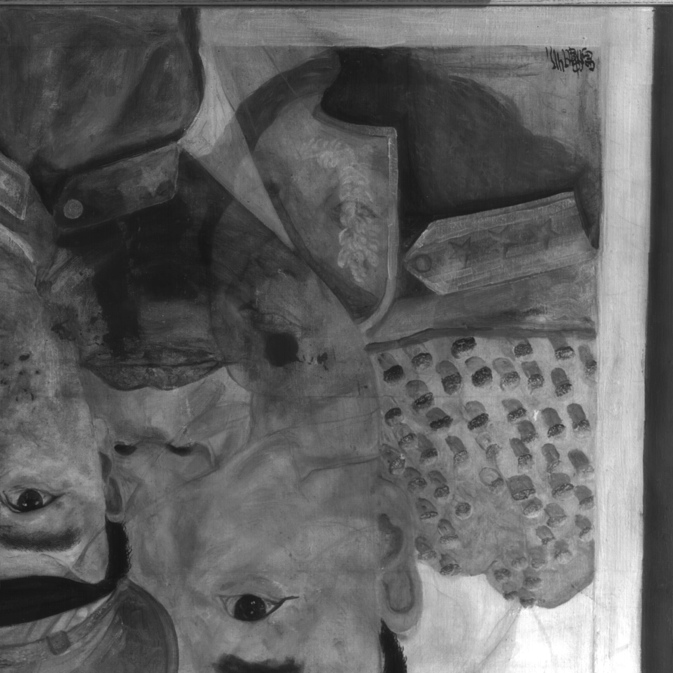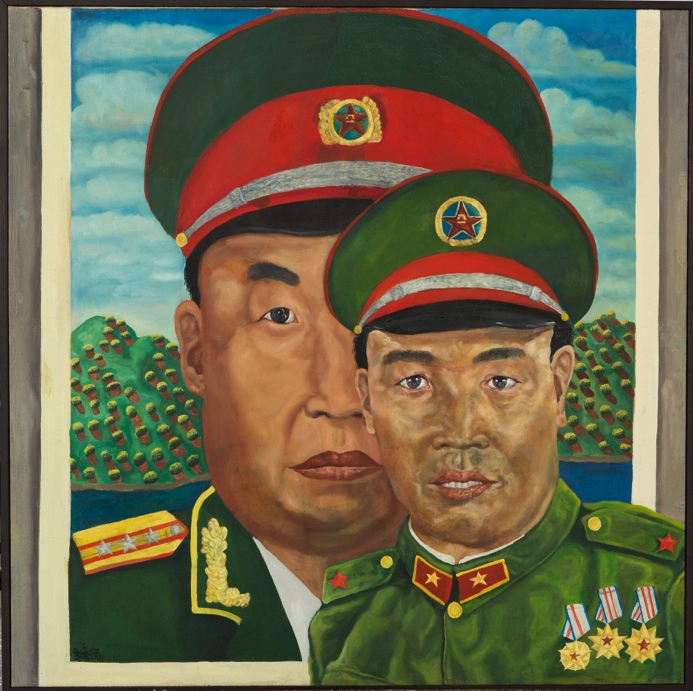
By Lewis Brown
1991, 100 x 100 cm, mixed media on canvas. Private collection.
Author/s: Arcanes
This portrait depicts the father of the artist posing before an official portrait of Zhu De, an early revolutionary thought to be the China’s Red Army’s founder.
Prior to its conservation the work was examined to gather as much information as possible regarding its physical history. Some technical elements raised interest, as they did not seem to relate to the visible composition.
Thus it was decided to use infrared reflectography, a non-invasive analytical technique, to look beyond the visible layers of paint. By using the infrared spectrum, conservators and scientists are able to study an image deeper through its layer, and study characteristics such as underdrawings or pigments used.
Using the Osiris camera, infrared images were taken of the painting. Also called reflectograms, the images revealed the presence of a former composition underneath the current one. A portrait of a woman is clearly visible and had been almost fully executed before the artist decided to change the composition.
Artists are known for re-using canvasses, whether of their own or of others. Being aware of such a compositional change allows conservators to further the understanding of the technical practices of a particular painter or group of artists. It is also a crucial tool for a conservation treatment rationale. The presence of many layers of paint, varying in thickness and nature, such as in the present work, will affect the decisions made and materials chosen to conduct the interventions.
